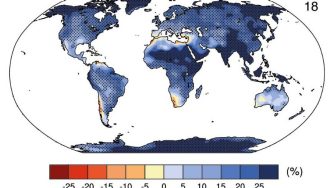
While global climate models (GCMs) remain our best tool for investigating the Earth’s system response to anthropogenic forcings, their spatial resolution (generally hundreds of km) is much coarser than the scales of the key processes leading to precipitation extremes (e.g., intense convective rainfall events). Therefore, parametrizations are necessary and the simulation of precipitation is not explicitly resolved in models. Spatial resolution is finer in regional climate models (RCMs) (generally tens of km), which is expected to improve the simulation of precipitation extremes that are very sensitive to spatial contrasts and topography. However, even at the scales of regional models parametrizations are still required.
Global and regional models have advantages and disadvantages for studying precipitation extremes, but how their output scales with respect to the other is rarely compared. In particular, it is unclear how the future changes in precipitation extremes from large ensembles of regional climate models compare to those from global models.
This project will assess how precipitation projections for Australia from global and regional models scale using the latest start-of-the-art GCMs and RCMs.
Requirements: Some prior programming and data visualisation experience (e.g., Python, NCL, MATLAB, R, etc.).
This project is supervised by A/Prof Lisa Alexander and Dr Margot Bador (UNSW Sydney). Please contact l.alexander@unsw.edu.au for more information.
